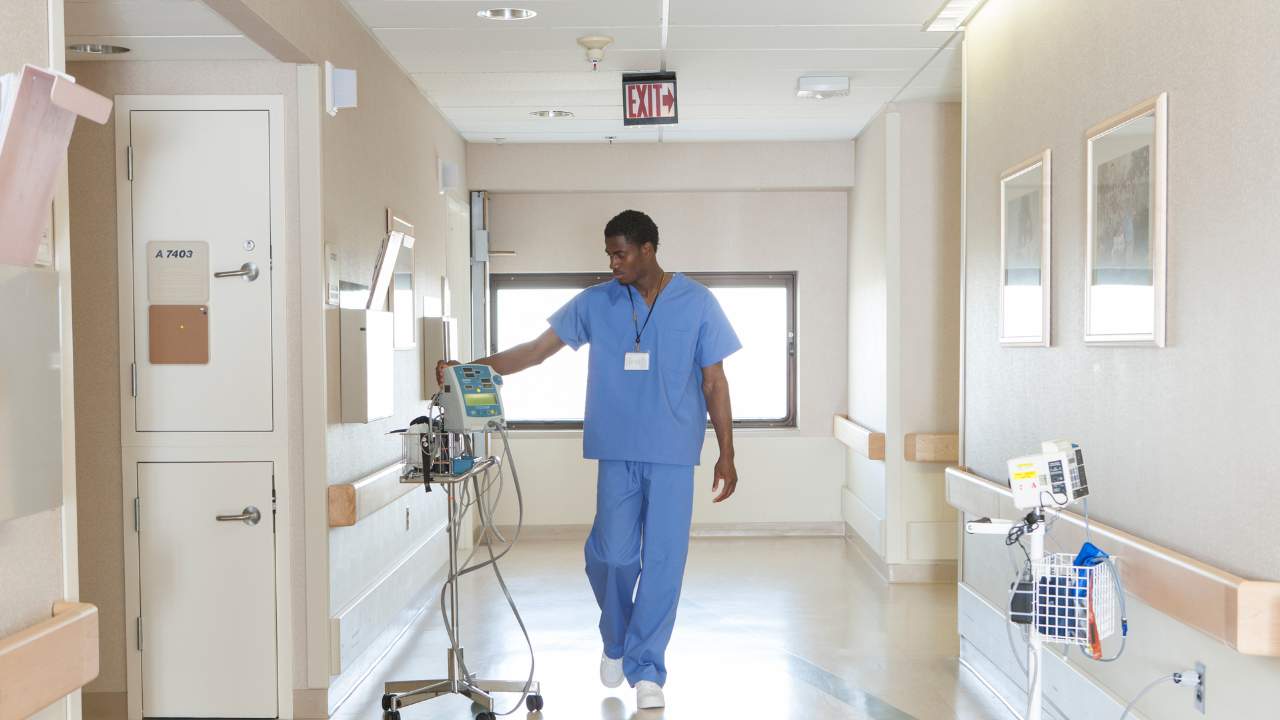Table of Contents
You may ask yourself, what is EBP? This comprehensive guide explores the intricacies of evidence-based practice (EBP), highlighting its relevance and transformative impact on clinical decision-making within the nursing process.
What Is Evidence-Based Practice?
Evidence-based practice is a cornerstone in modern healthcare, representing a systematic and problem-solving approach to clinical decision-making. By definition, evidence-based practice integrates the most reliable scientific evidence with the expertise of clinicians and the unique preferences and values of patients. By melding these components, EBP strives to optimize health outcomes and elevate the standard of patient care across diverse healthcare settings.
This approach ensures that healthcare interventions are grounded in the latest and most robust scientific findings, not just based on tradition, anecdotal evidence, or clinician intuition. By considering the best available evidence alongside clinician expertise and patient preferences, EBP facilitates informed decision-making tailored to each patient's individual needs and circumstances. This patient-centered approach promotes a collaborative relationship between healthcare providers and patients, giving both empowerment to participate actively in care decisions.
Overall, EBP serves as a guiding framework that aligns healthcare practices with evidence-based guidelines and standards, ultimately aiming to enhance patient outcomes, improve quality of care, and drive continual improvement in the healthcare industry.
What Are the 5 Steps of Evidence-Based Practice in Nursing?
- Asking a clear and focused clinical question: The first step in EBP involves formulating a specific and answerable question using the PICO format. This format considers the Patient/Problem, Intervention, Comparison, and Outcome to ensure the question addresses the patient's needs and conditions precisely.
- Searching for the best available evidence: Nurses conduct thorough literature searches across reputable databases such as PubMed, CINAHL, and the Cochrane Library. This comprehensive search aims to identify relevant research studies that address the clinical question posed in the first step, ensuring access to the most current and reliable evidence.
- Critically appraising the evidence: Once nurses identify relevant research, they critically evaluate its validity, impact, and applicability to the patient's situation. This appraisal process ensures that the selected evidence is of high quality and relevant to the patient's condition, helping inform clinical decision-making.
- Integrating the evidence with clinical expertise and patient preferences: Nurses combine the appraised evidence with their clinical knowledge and the patient's values and preferences. This integration process ensures that the nursing care plan (NCP) is tailored to the individual patient's needs, preferences, and unique clinical circumstances, promoting patient-centered care.
- Evaluating the outcomes of the practice decisions: After implementing the evidence-based intervention, nurses can assess its effectiveness and outcomes. This assessment involves monitoring patient progress, measuring outcomes against established goals, and adjusting the care plan. This evaluation is necessary to enhance patient care and improve outcomes over time.
These five steps form a systematic approach to EBP in nursing, guiding nurses through the process of identifying, appraising, and integrating evidence into clinical practice to ensure positive patient outcomes and quality care.
What Are Evidence-Based Nursing Methods?
In nursing, evidence-based methods serve as the foundation for informed clinical decision-making, shaping the quality and efficacy of patient care. These methods, including systematic reviews, randomized controlled trials (RCTs), and clinical practice guidelines, epitomize rigorous research methodologies that yield reliable and credible evidence. By adhering to these high standards, nurses ensure their practice is grounded in the latest evidence, promoting excellence in patient care delivery.
Through systematic reviews, nurses analyze evidence-based research to obtain key findings and effectively inform clinical practice. RCTs are a critical method, considered by many as a top-notch standard in research methodology. They provide valuable insights into the efficacy of interventions, guiding nurses in selecting evidence-based treatments tailored to individual patient needs. Clinical practice guidelines offer standardized frameworks that fuse evidence with clinical expertise, leading to consistent and evidence-based care delivery across healthcare settings.
This commitment to applying scientific findings enables nurses to deliver care that aligns with the forefront of clinical standards, promoting excellent patient outcomes and enhancing the overall quality of care. By embracing evidence-based nursing methods, nurses contribute to the continual advancement of the nursing profession, driving innovation and excellence in patient care.
Examples of Evidence-Based Practice in Nursing
Several examples of evidence-based practice in nursing highlight the application of EBP by demonstrating its impact on patient care and outcomes:
- Hand hygiene practices: Hand hygiene is paramount in healthcare settings to reduce the transmission of pathogens and prevent hospital-acquired infections (HAIs). Nurses rigorously follow hand hygiene protocols, including thorough handwashing with soap and water or using alcohol-based hand sanitizers. These protocols occur before and after patient contact to minimize the risk of spreading infections. By maintaining strict hand hygiene practices, nurses play a crucial role in protecting patients from potentially harmful pathogens, ultimately improving patient safety and outcomes.
- Fall prevention strategies: Falls are a significant concern in healthcare facilities, especially among elderly patients or those with mobility issues. Nurses can utilize standardized assessment tools like the Morse Fall Scale to comprehensively assess patients' fall risk factors. Based on the assessment findings, nurses implement preventive measures such as bed alarms, non-slip footwear, and assistance with mobility, reducing the likelihood of falls and associated injuries. Through proactive fall prevention strategies, nurses can promote patient safety and prevent adverse events or accidents, enhancing overall patient care quality.
- Pressure ulcer prevention methods: Pressure ulcers, also known as bedsores or pressure injuries, are a common complication among bedridden or immobile patients. Nurses employ evidence-based pressure ulcer prevention methods, including regular repositioning of patients, utilizing pressure-relieving devices such as specialized mattresses or cushions, and maintaining optimal skin hygiene. These interventions help distribute pressure evenly, reduce friction and shear forces on the skin, and promote blood circulation, thereby preventing the development of pressure ulcers. By implementing proactive pressure ulcer prevention strategies, nurses safeguard patients' skin integrity and minimize the risk of serious complications, improving overall patient comfort and well-being.
- Pain management protocols: Effective pain management is essential to ensure patients' comfort and improve their quality of life. Nurses employ evidence-based pain management protocols that encompass a holistic approach, combining pharmacological interventions such as analgesic medications with non-pharmacological interventions like relaxation techniques, therapeutic exercises, and heat or cold therapy. By addressing pain comprehensively, nurses alleviate patients' discomfort, enhance their recovery, and promote their overall well-being. On top of that, nurses regularly assess and reassess patients' pain levels, adjust pain management strategies as needed, and educate patients about pain management techniques to empower them to manage their pain effectively. Nurses can optimize their patients' comfort and enhance their overall care experience through evidence-based pain management protocols.
Overcoming Challenges and Implementing EBP
Implementing evidence-based practice in healthcare presents challenges despite its significant benefits, including enhanced patient outcomes and cost reduction. Resistance to change, resource constraints, and the necessity for ongoing professional development are common hurdles. However, proactive strategies can mitigate these challenges and facilitate successful EBP integration.
Fostering a culture of continuous learning within healthcare teams encourages adaptability and innovation, which are essential for navigating changes associated with EBP adoption. Promoting interdisciplinary collaboration fosters a shared understanding of EBP's value and facilitates collective problem-solving. Moreover, leveraging technology supports evidence acquisition and evaluation processes, enabling better decision-making rooted in the latest research. By embracing these strategies, healthcare organizations can overcome barriers to EBP implementation, creating an environment more conducive to evidence-based decision-making and ultimately improving patient care quality.
Embrace Evidence-Based Practice in Nursing
Evidence-based practice is indispensable in modern nursing, guiding nurses to make informed, effective decisions that enhance patient care. By adhering to the steps of EBP and overcoming those implementation challenges, nursing professionals can ensure that their practice is scientifically grounded and tailored to the unique needs of their patients. As healthcare continues to evolve, the role of EBP in nursing will only grow in importance, cementing its status as a cornerstone of quality patient care and clinical excellence.
For those looking for new opportunities to acquire nursing experience in diverse settings and apply evidence-based practices, sign up with Nursa today to pick up PRN nursing jobs near you.
Sources:














